In a joint statement released on 26th September 2024, the UK, US, and Australia reaffirmed their deep commitment to the AUKUS trilateral partnership during a high-level meeting at the Old Royal Naval College in London.
The defence ministers of the three nations gathered to review progress on their joint efforts to bolster regional security in the Indo-Pacific, focusing on the development of conventionally armed, nuclear-powered submarines under the SSN-AUKUS programme.
One of the key highlights from the meeting was the UK’s decision to surpass its original commitment by pledging £4 billion towards the SSN-AUKUS project, significantly enhancing its investment to support the detailed design work and the procurement of long-lead items necessary to meet the delivery timeline.
This comes as part of a larger strategy aimed at ensuring a robust and continuous build-up of submarine capabilities for the Royal Navy and its allies over the coming decades.
This financial contribution will also support the UK’s Defence Nuclear Enterprise, where £3 billion has been allocated to enhance submarine industrial infrastructure, ensuring the success of the long-term plan to develop conventionally armed, nuclear-powered submarines. This investment aligns with the UK’s broader strategy to remain at the forefront of advanced military technology and maintain its leadership role in the Indo-Pacific region.
The US, for its part, has committed USD 17.5 billion to its submarine industrial base, focusing on supplier development, shipbuilder and supplier infrastructure, workforce development, and technology advancements. According to the statement, this substantial investment will “support initiatives related to supplier development, shipbuilder and supplier infrastructure, workforce development, technology advancements, and strategic sourcing,” strengthening the US’s ability to deliver the advanced submarine capabilities required for the SSN-AUKUS programme.
Australia, meanwhile, is making a significant investment of over AUD 30 billion to enhance its own defence industrial base and ensure that it can sustain the high demand for skilled personnel and robust supply chains needed to support the submarines’ long-term operational capabilities. The Australian government has launched several initiatives to build a skilled workforce, including postgraduate scholarships and the “Jobs for Subs” initiative to recruit, train, and retain additional graduates and apprentices to support Submarine Rotational Force-West (SRF-West) in Western Australia.
The joint statement emphasised the strategic importance of these investments, noting that the three nations are committed to maintaining the highest standards of nuclear non-proliferation and fostering collaboration across their industrial bases. The leaders also reaffirmed their commitment to “uphold the global rules-based order where international law is followed, and states can make sovereign choices free from coercion.”


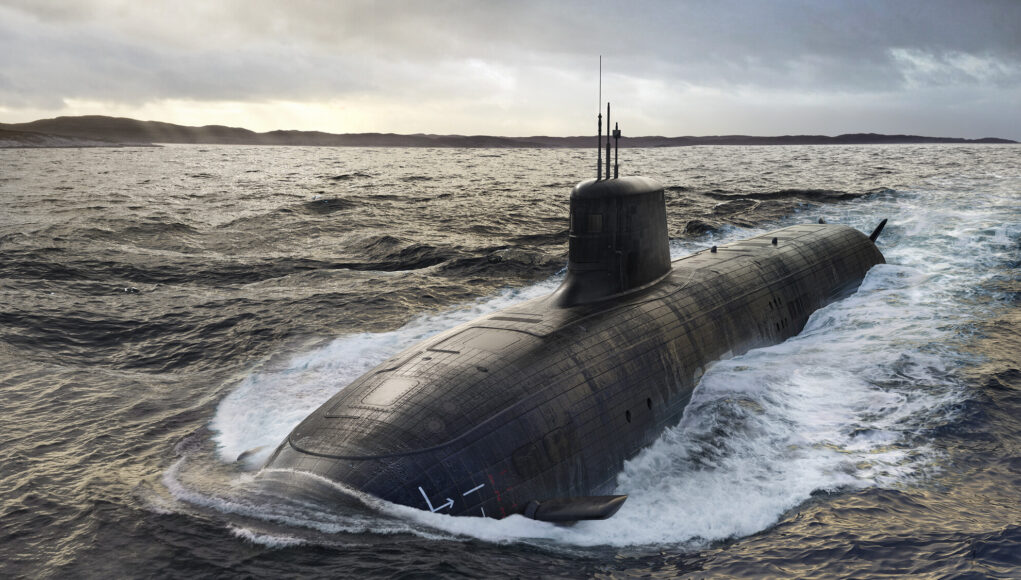
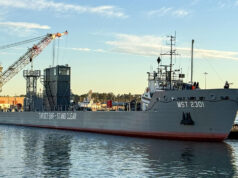
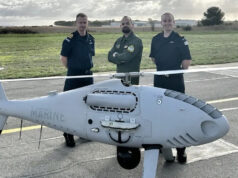
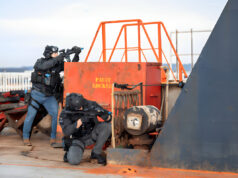
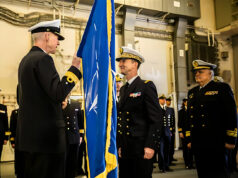
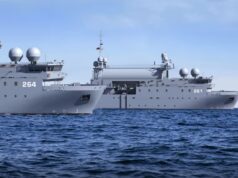
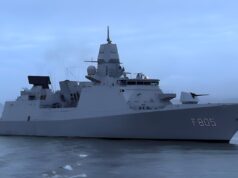
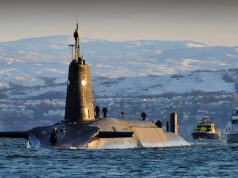
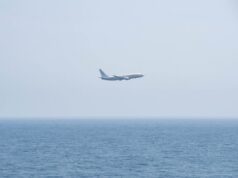
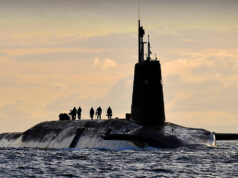


hope its up and running pretty soon.
does anyone know how many the royal navy will get? just a thought
One. Be about £5 biilion each by 2040.😇
Atleast we are taking one thing seriously in defence. If you’re going to put all your eggs in one defence basket for the 21st century arguably submarines are the way to go.
It seems increasingly likely we are getting a big increase in fleet size. All this spending makes no sense for 7 SSN’s.
Don’t get to excited. 7 Astute class boats will have cost an awfully large amount of money.
They did, but spreed over a significant length of time ( 40 years) and they pissed around for the first 15 years before even starting the first boat..( which is why in the end we ended up with only 7). There seems to a hell of a lot more focus this go around.
The “Pissing around†was only about 7 years, that effectively gutted the U.K Nuclear Naval industrial industry. The rest was down to dithering regarding replacement numbers, politicians with zero understanding of industry and then deciding to order insufficient boats for a cost effective production cycle.
Simple rule is that if you want a cost effective solution then set a realistic force level and properly fund industry to deliver it.
I sort of included every bit of prevarication since 1986…and all the mind changing…from SSN20 to batch 2 Trafalgar to the Astute program…
All true. But people are quick to start setting high expectations about numbers when no official requirements have been announced. Same with Tempest.
Fingers crossed we will get firm numbers from the defence review…I’m would hope to see 8-10.
That would be very nice 🙂 ðŸ‘
True but why double barrow in size if the intent is not for more boats.
I’d like to think we will get an uplift in boat numbers. But I guess we will be building boats for Aus too. Or at least sections.
don’t you mean they “phissed” around? 😚
sorry- hat, coat door.
Am curious whether a specific number of SSN-A will be announced in conjunction w/ results of SDR-25? According to previous comments by 2SL, SSN-A design should be reasonably advanced by that timeframe. Additionally, RN submarine drydock infrastructure issue should be well along pathway to resolution. Wonder whether RN (submarine specific) recruitment and retention issues will be addressed at that time? Actually, potentially foresee the component parts of a coherent plan surfacing (marginal pun intended 😉). Very much hope a similar plan will eventually emerge for USN SSN and SSBN fleets. 🤔🤞🤞
This is good news but without new, additional money what will be cut to fund AUKUS? For all the statements about spending 2.5% GDP, I genuinely believe that defence will never see it. So, what gets cut?
Triple lock pension, if I had my way.
Fuel allowance got cut to cover most of that increase in the pension!
Didn’t really get cut.
Most articles are saying, due to the coverage, poorer people are more likely to actually apply for it now. So rather than it going to Quentin’s new golf clubs, it can go to people who really need it.
This year, the pension increase was £900. The WFP is maximum £300.
It’s hard to keep track of announcements about nuclear funding. The increase in the 10 year spend between the 2022 and 2023 equipment plans was @£38b. It will put extra pressure on the rest of the defence budget.
I still wonder whether an all SSN fleet is the best use of resources. There are roles, and areas, where smaller, conventional subs could be effective at much lower cost. We might even be able to keep them at sea.
The SSN fleet has to return to 12 boats ( allow 8 fully operational boats at any one time), that’s the minimum viable fleet in a dangerous and volatile world.
As the World Parliament of Peace President elect VITALI ALEXANDROVICH DRUZHININ and my Nigerian American wife Kate Grace Druzhinin GOLIK ZAGURSKY THOMAS GARCIA we are fully committed in supporting our King Charles III and his team in elevating the Admiralty to the new military Intelligence level with our faithful centennial partners of the Commonwealth of the British Empire nations and states. AUKUS ALLIANCE will be a challenge in the Pacific region. But it will also be a challenge for those who occupied the Middle East and the Mediterranean sea with Western Union Africa inclusive by illegal forceful means of a false multilateralism.British King Charles III and his Queen Consort Camilla will have our unreserved support in hour of work and peace. Let our two families continue being united in the world of artificially triggered caos and warfare. We call upon Her Excellency Princess Megan Markle to fully integrate into the mighty family of the Windsors and drop the pretense of the coloquial 100 million dollars false prize for reliving into the privacy of the distinguished family in the Buckingham palace. God save the King and make the Empire government stringer and wiser day after day.
I’m finding it difficult to digest the fanfare around AUKUS whilst it seems to me that the Astutes have hardly wet their wings and the build programme is not yet complete! They have been billed as the worlds finest but have had a poor service/availability record thus far-almost invisible and planning their replacements already! Even given for the glacial pace of delivery for modern military hardware, I wonder is it just me in my old age unable to make sense of all of this? OK, we can’t churn out Liberty ships at one a week nor Spitfire types by the hundred per month, but something is amiss😬
“something is amiss”
Yup, our once dominate industrial base and engineering is no longer seen as a desirable career path…
Also, modern high tech systems take far more hours to manufacture even with increasingly automated production lines. Automation for small numbers of very complicated products such as warships and submarines is still a challenge especially when you factor in cost of the machines, but progress is being made.
Training folk to work on these complex systems also takes more time as there is more to learn, teams are bigger – no computer engineers working spitfires being an obvious difference. It all adds up.
The other problem is the speed of change relative to the time it takes to design and build a big system, makes trying to avoid obsolescence before you even build the damn thing quite the challenge.
Also, it all adds to cost…
I could go on and on and on and… well you get idea 🙂
Cheers CR
Hi CR-understand and agree completely but intuitively feel there have to be some better ways😃Cheers from Durban
Hi geoff49,
There is, but it ain’t easy.
Firstly, you have to accept that not all of the capabilities you might be hoping for will be available in time for the platform construction. This really doesn’t go down well with some of the end users…
Secondly, no matter how clever you think your analysis is you don’t have a crystal ball.
Both of the above mean you need to plan for upgrades, spiral development as the RAF calls it on the Typhoon program. The odd thing about modern tech is that the small expensive stuff goes obsolescent quicker than the big heavy metal thing that carries them around. It even holds true for the whoosh bangs, missiles can be upgraded as well as the platforms that carry them.
It can get all very complicated and complex which means you have to be flexible and responsive as you continually develop a platform and its capabilities. It is a tough project management problem and requires a long term view of how you want to develop your capabilities without being proscriptive… you have to be able to balance threat and technological developments against national interests, the latter is a political choice so a moving target, threat and technology both are beyond your direct control.
In short, it is possible to do better but it ain’t easy.
Cheers CR
The US/Australian desire to get the AUKUS subs programme underway is rather at odds with our current submarine build programme and budget. If AUKUS has to press on at speed, either a lot of new money will be required or there will have to be substantial cuts elsewhere in the forces.
The last Astute is currently expected to be commissioned in 2026, then Barrow has the 4 Dreadnoughts to complete. They are expected to be commissioned at 2-3 years between boats, starting in the early 30s and finishing in the early 40s. The increase in capacity at Barrow suggests that we might be planning to build AUKUS at the same time as Dreadnought, but that would be quite a challenge.
Where is the skilled workforce to come from? BAE is upping its apprentice training numbers, but it will be many years before they have the capability to build 2 advanced submarine classes simultaneously.
Where is the money to come from? The nuclear programme already siphons off 27% of the entire forces equipment budget every year. If we start building two classes simultaneously, the costs are going to be unaffordable.
The Astutes haven’t spent a lot of time at sea and should probably be good for 25 years servic, so being replaced by AUKUS from 2035. But we will be building Dreadnought on the same timetable.
What we needed was an extra Astute tacked on at the end if the order to get us up to 8 – still far short of the 10-12 needed, the purchase of the first 2 of a class of 6 SSKs to give us some capability in the Atlantic, where we currently have next to nothing available, then the construction of the Dreadnoughts on a much swifter schedule, as the Vanguards are well overdue for replacement. That would give us 14 subs at some point in the mid thirties, 3 more than currently planned.
No chance of anything sensibly planned like that, with Dreadnought running late and going miles over budget, then AUKUS likely being rammed into the programme prematurely. Even if HMG coughs up more money, do we really want to see it all grabbed by the nuclear programme, at the expense of all the other urgent equipment we need for air, land and sea?
Best plan would be to build the AUKUS for Australia first, on their budget, and delay replacement of the Astutes until the early 40s.
Not strictly correct fella. Back in the day(late 80S) I was on Talent in build, at the time we were building Triumph and the first 2 V boats were in various stages of build in DDH. We had and still have the capability to build two separate classes at the same time.
I would hazard a guess that both SSN-A hulls 1&2 will start to build alongside Dreadnought hulls 3&4. It will need to happen if we are to get replacements for Astute & Ambush before they reach the end of their core lives (2035 & 2038). If not we will be looking at having to refuel two 30+ yo boats that have a reactor that wasn’t designed to be re-fuelled. We tried that on Vanguard – that didn’t work too well did it!
Aus will not get the first two new build boats, we will if only to test and prove that they actually do as it says on the tin. Suspect that Aus will get either hull 3 or 4 as their first new build.
That’s sound D32.
Building 2 classes simultaneously in the 80s was possible and affordable because Bartow had a big workforde and we were spending 4.8% of GDP on defence.
I gathrr that he workforce is a good bit smaller now – and we have under half the budget we had in the 80s. Building the first 2 AUKUS at the same time as SSBNs 3 and 4 is going to be a tough call on the budget and a lot of other important equipment and maybe force levels are going to suffer accordingly.
You are probably right that the first two SSN-As will go to the RN. I can’t see how we squeeze the AuKUS into the budget though.
I
With the latest 10 year plan including an extra £37b for nuclear programmes, nuclear is set to take nearly 40% off the entire equipment budget. I understand why the RN opted for an all nuclear submarine fleet and sold off the 4 Upholders. But the inflation adjusted cost of new SSNs is far higher than previous classes. ( Inflation adjusted cost of a Churchill class would be @£300m). So the decision needs to be revisited. For areas like the North Sea or the Med, for tasks like surveillance or SF insertion, conventional subs would be sufficient. It will be unaffordable to increase SSN numbers to levels we had in the 1980s. If we want more hulls, the only way is to have a 2 tier fleet
You are spot on Peter S. Whatever our defence needs and wishes, they have to fit inside a very tight and inadequate budget.
If we are to spend an extra £3.7bn a year on the nuclear programme, it has to come from some other equipment budget. To put it in stark terms, that £3.7bn pa is equal to thel RAF’s annual equipment budget.and more than the Army and helicopter equipment budgets together. Which elements of air and land power are we ready to axe to pay for a handful of SSNs? Or Which chunks of the RN fleet?
The RN no doubt expects HMG to provide an extra £3.7bn pa to pay for it. But the SSN is not the only equipment priority. We need more fast jet aircraft, we have Tempest to fund, we don’t have enough Poseidons and are not ordering enough Wedgetails. The list goes on. The Army is even worse off, with the inadequate numbers of Challenger, Boxer and Ajax envisaged, plus all the other pressing artillery and vehicle upgrades and replacements.
Our nuclear weapons and RN aspirations are gobbling up far too much of the cake already. The case for a two-tier submarine force is a strong one.
The SDR25 is likely to switch emphasis back to NATO Europe. To provide some submarine presence in Eastlant doesn’t require a host of expensive SSNs, modern SSKs with lithium batteries would be more than a match for Russian submarines. At not much more than half the cost of an Astute or SSN-A.
That would free up the Astutes for the High North, shotgun for the at sea SSBN and some out-of-area patrols. By my calcs, we would still be several Astutes short, but their is no slack in the budget to increase numbers.
Where are you getting your 10 year figures from, I haven’t found that doc yet?
Just make sure you invest in being able to keep them maintained and operational this time….